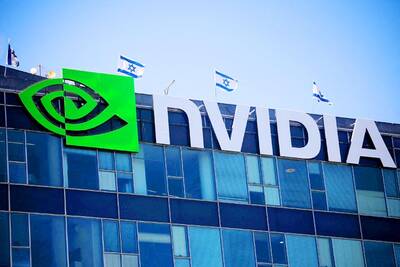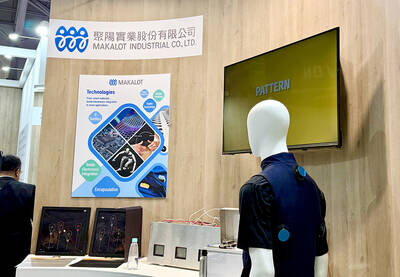Shares of China Airlines (中華航空) and EVA Airways (長榮航空) rallied in yesterday morning‘s trade on increased optimism toward their earnings outlook after direct flights between Taipei International Airport (Songshan) and Tokyo International Airport (Haneda) resumed a day earlier following a 31-year hiatus, dealers said.
China Airlines rose 4.61 percent to NT$24.95, while EVA Air gained 6.47 percent to NT$32.90.
China Airlines and EVA Air will provide 14 Taipei-Tokyo return flights each week.
According to Hua Nan Securities (華南永昌投顧), the resumption of direct flights between the two airports is expected to boost the number of Japanese tourists visiting Taiwan by about 10 percent a year.
BENEFICIARIES
“Without doubt, China Airlines and EVA Air are the two direct beneficiaries of the flight resumption,” Hua Nan analyst Henry Miao (苗台生) said.
“The strong buying seen this morning reflects investors’ upbeat mood about the two carriers,” Miao said.
Hua Nan Securities said the new route’s contribution to the two carriers’ sales would become clearer next year, as the contribution to this year’s revenues would be minimal because there are only two months remaining.
Taking the Taipei-Tokyo flights into account, Hua Nan Securities said China Airlines was expected to post earnings per share of NT$2.79 this year and NT$3.07 next year. This compares with a loss per share of NT$0.83 last year, when the global economic meltdown hit the airline business.
Hua Nan Securities forecast EVA would register earnings per share of NT$4.84 for this year and NT$5.08 next year, compared with a loss of NT$0.96 last year.
CONVENIENCE
China Airlines said on Sunday the Taipei-Tokyo flights were expected to have an average capacity of 80 percent because of the increased convenience it offers travelers.
Landing at Haneda rather than at Narita International Airport — the usual destination for international flights, which is farther from Tokyo — can save travelers at least 30 minutes on the commute into Japan’s capital.
Hua Nan Securities had a target price of NT$28 for China Airlines and NT$38 for EVA Air.

Shares in Taiwan closed at a new high yesterday, the first trading day of the new year, as contract chipmaker Taiwan Semiconductor Manufacturing Co (TSMC, 台積電) continued to break records amid an artificial intelligence (AI) boom, dealers said. The TAIEX closed up 386.21 points, or 1.33 percent, at 29,349.81, with turnover totaling NT$648.844 billion (US$20.65 billion). “Judging from a stronger Taiwan dollar against the US dollar, I think foreign institutional investors returned from the holidays and brought funds into the local market,” Concord Securities Co (康和證券) analyst Kerry Huang (黃志祺) said. “Foreign investors just rebuilt their positions with TSMC as their top target,

H200 CHIPS: A source said that Nvidia has asked the Taiwanese company to begin production of additional chips and work is expected to start in the second quarter Nvidia Corp is scrambling to meet demand for its H200 artificial intelligence (AI) chips from Chinese technology companies and has approached contract manufacturer Taiwan Semiconductor Manufacturing Co (TSMC, 台積電) to ramp up production, sources said. Chinese technology companies have placed orders for more than 2 million H200 chips for this year, while Nvidia holds just 700,000 units in stock, two of the people said. The exact additional volume Nvidia intends to order from TSMC remains unclear, they said. A third source said that Nvidia has asked TSMC to begin production of the additional chips and work is expected to start in the second

REVENUE PERFORMANCE: Cloud and network products, and electronic components saw strong increases, while smart consumer electronics and computing products fell Hon Hai Precision Industry Co (鴻海精密) yesterday posted 26.51 percent quarterly growth in revenue for last quarter to NT$2.6 trillion (US$82.44 billion), the strongest on record for the period and above expectations, but the company forecast a slight revenue dip this quarter due to seasonal factors. On an annual basis, revenue last quarter grew 22.07 percent, the company said. Analysts on average estimated about NT$2.4 trillion increase. Hon Hai, which assembles servers for Nvidia Corp and iPhones for Apple Inc, is expanding its capacity in the US, adding artificial intelligence (AI) server production in Wisconsin and Texas, where it operates established campuses. This

Garment maker Makalot Industrial Co (聚陽) yesterday reported lower-than-expected fourth-quarter revenue of NT$7.93 billion (US$251.44 million), down 9.48 percent from NT$8.76 billion a year earlier. On a quarterly basis, revenue fell 10.83 percent from NT$8.89 billion, company data showed. The figure was also lower than market expectations of NT$8.05 billion, according to data compiled by Yuanta Securities Investment and Consulting Co (元大投顧), which had projected NT$8.22 billion. Makalot’s revenue this quarter would likely increase by a mid-teens percentage as the industry is entering its high season, Yuanta said. Overall, Makalot’s revenue last year totaled NT$34.43 billion, down 3.08 percent from its record NT$35.52